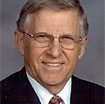In many of our denominations, the Sunday sermon is somewhat dictated by a given text in the lectionary.
We start from a text and work towards a sermon. As I review my own life as a preacher, I realize that I have gone through several different approaches to the given text. Each of them is different. Each of them is legitimate.
In seminary, I learned the three-point, propositional approach to preaching. So, I searched the text for its salient idea[s]. I had learned my biblical languages well. I knew the historical-critical method. This sent me to the text in search of ideas. Oftentimes the idea came to me because of the use of a particular Greek word. That word would in turn remind me of a theological idea [probably from Luther] and my sermon was born. My sermons were mostly didactic in form. This is one way of moving from text to sermon.
While serving as a missionary seminary professor in Ethiopia, I was visited by a Luther Seminary professor. This mission professor kindly gave me a book as his way of thanking us for our hospitality. The book was, The Living Word, by Swedish theologian Gustav Wingren. I still consider this book to be the most important book on homiletics that I have ever read!**
Wingren’s main point was God’s word and human beings belong together. God speaks a word to humans, and we are alive! Humans are in bondage to sin, death, and the power of evil.. We are conquered. We are captives. Only the creative word of God can set us free. God’s word comes to us with the power to set us free from sin, death, and Satan.
I quickly realized this way of thinking would lead me to move from text to sermon in a quite different way. In this mode, I was not looking for ideas. I was looking for words of proclamation in the text that I might, in turn, speak to set people free. Proclamation differs from proposition. Wingren led me to realize that I needed to make such proclamation in first or second person, present tense language. I needed to speak God’s Word on God’s behalf. So I might conclude a sermon as such: “Jesus word for you from today’s text is: ‘As the Father welcomed the Prodigal Son so I welcome you. I bring forth the best robe and put it on you. I throw a sacramental party for you so that we can celebrate together your freedom from all that enslaves you.'”
When, in the late eighties, I was preaching on the Lutheran Vespers radio program, I had another new encounter. I began reading biblical scholars who were primarily interested in how the biblical narratives work and realized that a narrative approach to scripture, as proposed by many, would lead to wonderful new insights for preaching.
This led me to write books on each of the synoptic gospels showing how the text for each Sunday fit into the larger story of Matthew, Mark, and Luke. With help from some excellent narrative resources, I learned to look at texts in larger contexts. I realized that a sermon might tell two to four stories from a Gospel. The goal of such storytelling may be to discover a new idea. Or it might lead to a proclamation that emerges from the series of stories. Finally, it might just lead one to tell the stories and let them do their own work with the hearer. As I am fond of saying: “The stories of scripture are almost always more important than our thoughts about the stories.”
Were I to write on the topic of preaching today, I think one of my main goals would be to guide preachers into the world of preaching as biblical storytelling. The study of the textual story [some texts, of course, are not stories!] would lead us to think of other biblical stories from the same book of the Bible or from other books of the Bible that could be told in tandem the given text. One might think of this type of preaching as offering to our congregants travelling companions for life. We preach to put these stories of biblical people, this great cloud of witnesses, firmly in the minds of our hearers. Our prayer is that the people in these biblical stories will live in their imagination and offer them guidance for life. Probably the best place to begin this process is in children’s sermons. Just tell them Bible stories!
**Wingren’s The Living Word is available in paperback from Wipf & Stock.

